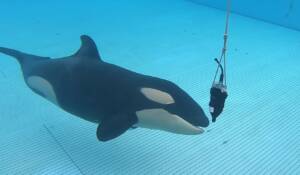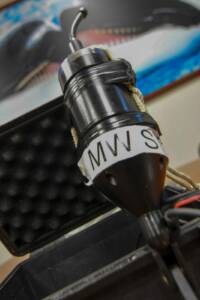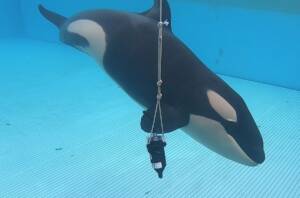Loro Parque, in its continuous commitment to scientific research, has recently begun to collaborate in research on the echolocation of orcas, a key sense that favours their orientation and the location of prey for hunting. There is not much information on whether it is a behaviour that cetaceans learn or if it is innate, nor is there data on the moment in which it appears in their development, so that the zoo, recognised as the best in the world, will contribute to providing information on a feature that is vital to their survival.
Loro Parque is working with the University of Southern Denmark in a study with Morgan’s calf in order to try and establish when echolocation begins in the young orcas. The first experiments have already begun.
Development of echolocation
Echolocation is the location of an object through the reflection of sound waves, used by animal species such as bats and cetaceans and in sonar systems.
In both bats and dolphins, echolocation skills have been studied for decades, and although there is a deep understanding of their capabilities and use, it is not clear how it develops. In the case of dolphins, recordings under animals in human care indicate that echolocation may develop after about three to four weeks, although other studies indicate that it may take much longer.
About young orcas, however, there is no information whatsoever, and some knowledge would help to better understand and protect these animals with more reliable risk-assessments on the impact of marine noise, its possible consequences, and even age estimates, based on sound recordings. Thus, by recording the calf periodically, one can begin to understand the development of its echolocation capacity – when it begins and how this sense evolves until it matches that of an adult orca.
Commitment to scientific research on orcas
In addition, thanks to the opportunities offered to science by the possibility of having access to an orca calf in a controlled environment, Loro Parque is also collaborating with the University of Zurich in a study on learning more about orca communication – another rather unknown subject, wherein we will investigate how the calf adopts and uses the communication sounds of the group dialect. Another Norwegian research group will study the existence of identification marks on orca calves, which will help to identify and track these animals more accurately in nature.













